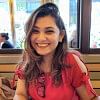
Sarah Anjum Bari
Sarah Anjum Bari is a writer and editor, pursuing an MFA in the Nonfiction Writing Program at the University of Iowa where she also teaches rhetoric and literary publishing.
Sarah Anjum Bari is a writer and editor, pursuing an MFA in the Nonfiction Writing Program at the University of Iowa where she also teaches rhetoric and literary publishing.
Beginning to read Fine Gråbøl’s What Kingdom, translated from the Danish by Martin Aitkin, is like sitting in a silent room, alone, and a voice begins to speak as though from beside you.
The walls of Dhaka city represent the volume and chaos of thousands of people jostling for ever-shrinking space.
It's true, I feel differently about books that I previously disliked or enjoyed reading and books that I want as a physical presence in my life
It’s hard not to recall our many conversations about literature as I try to summarise Shah Tazrian Ashrafi’s debut collection of short stories. They were always short discussions, opening and closing off in spurts, as happens over text. Exclamations over a new essay collection by Zadie Smith, or a new novel by Isabel Allende.
In the foreword, I wanted to capture how I, as a child, grew up listening to different stories: ghost stories, mythical stories from both Sanatana and Islamic religious scriptures, and fairy tales from 'Thakurmar Jhuli', compiled by Dakkhinaranjan Mitra Majumdar. It was a time when there were no boundaries for my imagination.
Like many veterans, I joined a creative writing MFA program because I wanted to evolve as a writer.
Here was a woman who was but a dot amidst the throngs of people who watched the Bosphorus Bridge being opened in October 1973, as fireworks erupted over a Turkey that now seamed Asia to Europe.
I always tell the authors to make subjective, qualitative decisions. So many of my authors say no to higher offers from publishing houses if they don’t feel comfortable with the publisher or editor.
A tiny red gate jostles for space among shops, apartments, and the flurry of traffic in Block F of Lalmatia in Dhaka. Like the name
When I think of Toni Morrison’s oeuvre, the word ‘geod’ comes to mind. A composite whole—each novel, each essay tightly knitted, contained by the solidity and confidence of its author’s direction of ideas. You think you know what to expect, given the ubiquity of its
A portion of my bookshelf looks “girlier” than the others. It’s stacked with hardbacks and paperbacks in various shades of pink, pale yellow, glittering gold, and some pops of red and purple. Anyone who walks in and looks at this section of the shelf will know immediately that it contains different variations of love stories, of stories about girls going on holiday and bonding with their girlfriends and reconnecting with themselves, usually having cast off a toxic job or relationship. Think of your Nora Roberts, your Cecelia Aherns and Jojo Moyeses and, if you like to step back in time, your Judith McNaughts.
The Goldfinch—the written version, Donna Tartt’s third literary triumph—opens upon a Christmas day in a hotel in Amsterdam. The “I” that speaks offers a brief recap of his murky dreams and departure from New York; what but he really (quickly) wants to get to is setting up the scene for us.
When we were kids, my younger cousin and I had a favourite game. Smaller and more agile, my cousin would hang off the side of the bed or a table, his squishy feet dangling and threatening to land painfully on the floor.
My copy of Zadie Smith’s Autograph Man is special for a number of reasons. Firstly, it’s the only one of my favourite author’s books that I haven’t read in its entirety.
Laal Kono Rong Noy (‘Red is Not a Colour’), curated by Mustafa Zaman, is displaying the works of artist Sanjoy Chakraborty from July 12 to 25 at Dwip Gallery, Lalmatia. Sanjoy Chakraborty studied History of Art at Rabindra Bharati University, India and has
Petrichor is the word for when rain hits dry soil, releasing a fragrance almost impossible to describe—the earth smells wetter somehow; richer, browner, greener. It was petrichor I smelled as I roamed, shuffled, and tiptoed my way through rain-drenched parts
It was sometime in winter last year that co-curator Sharmilie Rahman invited a group of artists—Abdus Salam, Abir Shome, Emran
Directed by Johan Renck and written by Craig Mazin, HBO’s five-part miniseries aired earlier this month takes us back to the worst